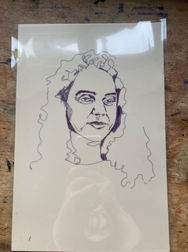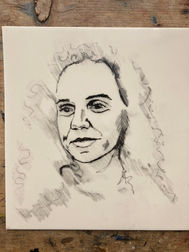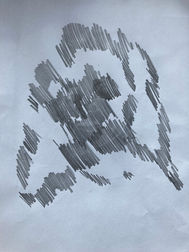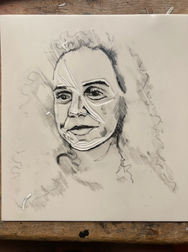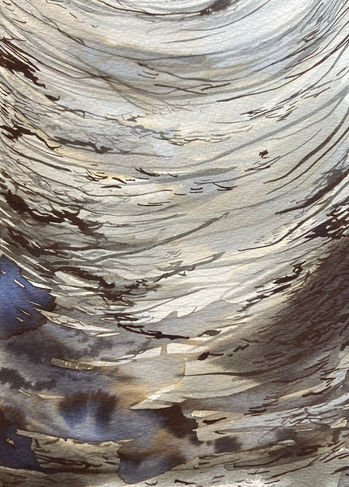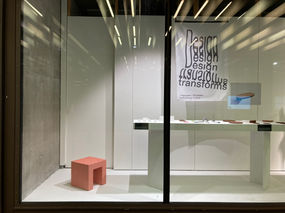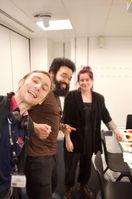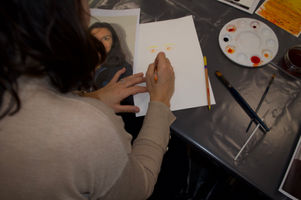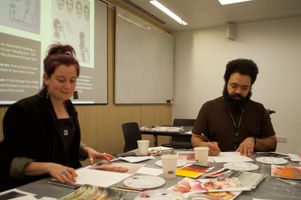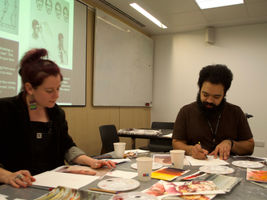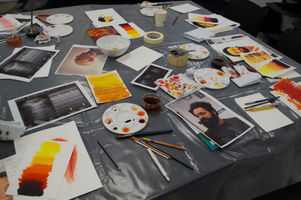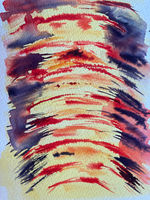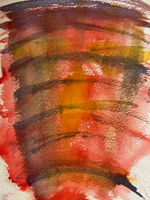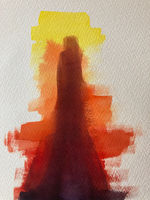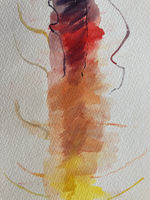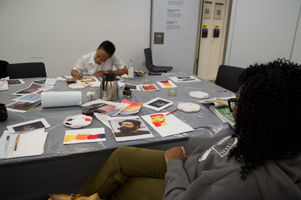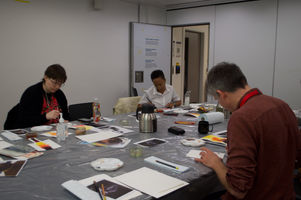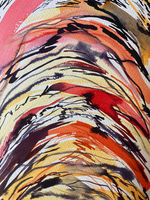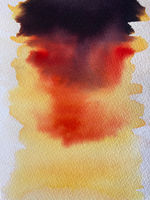SURGE III
This page represents my journey through the collaboration between WEISS, University of the Arts, London and Robert Stafford Williams (PhD Medical Physics, UCL). From the initial meet and greet to our planning process and development. I refer to SURGE III as SURGE throughout this page.
This link will take you to SURGE III Partnerships Announced

SURGE: is a project I’ve been selected to work on. It’s a collaboration between WEISS (The Welcome EPSRC Center for Surgical and Interventional and Surgical Sciences) at UCL (University College London), UAL (University of the Arts), London, Robert Stafford Williams (PhD Medical Physics, UCL), charities of our choice, participants affected by Lung Cancer and Heart Disease and myself.
At the start of this project, I went to University of the Arts, London for a match-making session between artists and researchers, with three researchers and 15 artists. To start the session, we had to introduce ourselves and talk about our practice and we had been asked to select three images to talk about. I am not a public speaker, and found this part of the workshop stressful but I had prepared what to say in advance.
Introduction to SURGE III
Everyone took turns to talk about their work and images and after we were split into groups, with five artists to one researcher, and given imagery tasks. For example: ‘If given £3000 what project could you do working in a primary school to inform children about different illnesses they could be susceptible to’. We were asked to fill out a form, writing down our ideas. The purpose of this activity was to show how creatively you could think on the spot and create ideas using this money. We then rotated to a different researcher with a different scenario to respond to. We did this three times.
At the end of the night, we had a more informal chat over pizza. We then went home to reflect on the evening and pick which researchers we would like to work with, ranking the different researchers.


SURGE III Meeting with Robert
This recording is of me and Robert chatting and making plans for our project in a restaurant close to the Southbank. This was the first time we meet after the match-making session. We spoke about our practices and what we would like to do for the project. At this point we didn’t know if we would be working together.
Application Project Outline
SURGE Project
Name of Artist(s): Kate Kelly
Name of Scientist(s): Robert Stafford-Williams
Robert and I want to examine our family history of lung cancer (LC) and cardiovascular disease (CVD), we will start our project by interviewing and photographing our family members and allowing us to learn about these conditions from a highly personal perspective. Therefore, when we work with members of the public affected by LC and CVD, we will explore these illnesses with dignity and care. Working with our network first would allow us to provide examples to the charities when we propose our workshops and exhibition.
The project's main aims will be to take a humanistic approach to our research, linking our two practices and exploring concepts using sound, pattern and portraits. We aim to interview and record people affected by LC and CVD, asking questions and collecting data based on their answers. I will also photograph the participants, which will be used later to paint portraits I will link the colour schemes on Roberts's data collection, he used to display data of Ultrasounds.
Questions we aim to explore:
Why do you think scientists spend time working to cure illness?
Do people feel they are listened to when going for these surgeries?
Do you feel there is a stigma surrounding your illness?
Do you ever feel lost in the medical Jargon?
Do you feel your race or gender has ever affected your care or treatment?
How have the people close to you been affected?
We are keen to work with two charities, one linked to LC and one to CVD. We will run a series of workshops and interviews and take photos of the participants. The collected pictures and recorded interviews will then be used to generate artwork. I would speak directly to charities and present them with an agreement for participants to review. This agreement would outline how their images and interviews will be used throughout the project.
Then we aim to teach a painting and colleague workshop; this includes Robert and myself. This workshop would run for several hours and involve painting and collage to create semi-abstracted portraits of people involved in researching their illnesses.
In one session, for example, we would work with people affected by LC, the charity ALK Positive. ALK Positive works with a rare form of lung cancer that affects women and Asian people disproportionally. https://www.alkpositive.org.uk/
The portraits created during these sessions would be displayed in the exhibition later in the year. These workshops aim to connect participants with others in a similar situation, in a safe space where their hands are busy creating. The sessions will also allow participants to discuss and talk to others in a similar situation in a non-medical environment. Participants will also learn new artists' skills and historical figures who have contributed to developing a treatment for their condition.
-
Interviewing people affected directly or personally by LC or .
-
The creation of 10 egg tempera portraits of people affected by LC and
-
Turning interviews into visual data to create a mural based on sound waves.
-
Two workshops with people with LC and . Running two workshops will allow us to cross-reference the data and compare people's experiences across different illnesses. Is there a crossover with experience, or is the experience very different depending on the condition?
-
An exhibition displaying sound, portraits created in the workshops and portraits of the participants.
The murals will visually represent the interviews undertaken during this project. They will use the visual langue of sound waves to depict common descriptive words that describe the subject's feelings. The mural will move around the exhibition space and represent different waves of people when a commonality of trauma or experience occurs. This mural will form a pattern creating a background to display the portraits made over the project.
We then want to create a series of sound pieces using the recorded material from the interviews and experimenting with playing some of the sound works at different volumes and frequencies, with some out of discernible range to form an experiential soundscape.
During the workshops, we will look at different scientists who have contributed to developing treatment and diagnosis of these illnesses. Using their faces as a point, we will create inky monochrome portraits and collages using sci-fi magazines. These semi-abstracted portraits will be displayed at the exhibition.
Application AMOUNMENT
Kate Kelly (MA Fine Art: Painting, Camberwell
College of Art) and Robert Stafford Williams (PhD in Medical Physics, UCL)
Kate and Robert's project aims to link their two practises by exploring Lung Cancer (LC) and Cardiovascular Disease (CVD) through sound, pattern and portraits.

They will meet with people affected by LC and CVD, asking questions and collecting data based on their answers. Kate will photograph the participants, which will be used later to paint portraits inspired by the colour schemes from Robert's data collection used to display Ultrasounds.
Kate and Robert will also host painting and collaging workshops for those affected by LC and CVD. The portraits created by the patients during these sessions will be displayed in the exhibition alongside Kate's portraits, sound pieces, and murals at the SURGE III exhibition in 2024.


SURGE III Planning a workshop: Lino
Robert and I plan to work with two different charities. Robert's ultrasound research explores lung cancer and heart disease and therefore we will be working and running two workshops, one with a charity linked to heart disease and another linked to lung cancer.
Within the workshop I aim for the people involved to create a series of abstract works inspired by images of ultrasounds and expressive portraits. I then plan to take the work created in the workshops and create a collaborative collage. So far I have been experimenting with lino printing onto canvas with ink. I rejected the lino print because the process takes too long for a three-hour workshop. However, Robert and I did like how the lino print visually looked printed on the canvas as it created a grainy effect reflective of ultrasound images.
These photos show the experimentation with lino printing onto canvas with the intention of creating a whole series of prints created during the workshop which could then be stitched together.


SURGE III Planning a workshop: Quink Ink
Robert's research involves using miniature ultrasound devices, that use half a millimetre wide fibres. He uses these devices to navigate them into the smallest parts of the body. The two major application areas are the cardiovascular system looking for damage, but also being able to navigate down the airways of the lung to be able to image lymph nodes and try to pick up things, particularly from peripheral cancer disease. Within Robert’s research, he is not only interested in technology and engineering but also in understanding people’s relationships with medical devices and with people’s experiences of medical technology. He is interested in the practical development of medical technology but also in making sure it is worthwhile and that it won’t strike fear or make people hesitant to go and get their scans. Therefore for Robert, the technology he creates needs to understand the personal’s response.
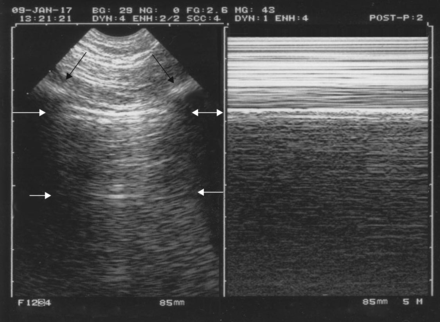
When reflecting on the workshop we wanted to run, I wanted it to be reflective of Robert's research. I am keen to use the visual language of ultrasound images. This led me down the path of experimenting with ink and painting the images of ultrasound images of Lungs. Within the workshop, I want to use this as a starter activity so the participants have the opportunity to experiment with the media and learn how it works. Creating an abstract outcome allows the participants to create something without the fear of having to generate a perfect outcome.
Paintings inspired by ultrasound images
With these outcomes, I have been thinking about layering and obscuring: how health conditions such as lung cancer cause complexities within the person's life, be this health or social and how with conditions like lung cancer the conditions might be hidden with little signs of a person being unwell.
This led me to think about the portraits the participants would create during the workshop. How, by layering the abstracted elements over their portraits, I could potentially anonymise the people involved, while representing the layers associated with having a disease such as lung cancer.
Because I haven't run the workshop yet, I have used my drawings and paintings of women I've painted previously to create the exampleyou can see below. This is simply me planning how the outcome could look with the participants work.
I photographed all the experimental outcomes and created this collage on Procreate, layering different elements over each other, playing with transparency and composition. This outcome demonstrates an example of how I could collage the participants' work together as the participants involved will create a portrait and an abstract painting during the workshop. Once the people involved have created the work I plan to edit and manipulate the work digitally and then print it onto silk. I want this collaged fabric to be hung on a hospital metal frame, which normally would be used to give patients privacy during treatment or examination. The image next to this text is an example of how my outcome will look once created.

Design for silk fabric
SURGE Planning a Collaborative Outcome


Dr Nikita, ink on paper, 21 x 29.7 cm
Video I sent to Robert, explaining my ideas.
When Robert and I spoke about why we were interested in SURGE and whats' important to us about medical care, we both spoke about the issues concerning women and ethnic minorities within the medical community. Robert said: ‘Being from uh, you know non white majority background myself….There are certain things you hear about the treatment…..that differ from what you get if you were sort of typical English person going in. So it's trying to get a yeah, a bit of an opportunity for those in the related medical conditions to express themselves and kind of get aspects and expression of what they what often doesn't get hurt, but also to have some feedback and influence on what could be the following directions of the developments within this kind of medical technology development process.’
I think this quote exemplifies why we connected so well in our initial discussions as our values and personal head beliefs aligned.

We are keen to work with sound during this process and we plan to pre-send the participants questions we would like them to answer, we will ask that the participants send us their responses as voice notes or written responses. We would then turn these audio recordings into soundworks and represent their words as sound waves.
The sound waves will be represented as seen in this digital drawing. I plan to paint directly onto the gallery wall: creating a visual mural of the stories the participants have disclosed. Or print our sound waves onto fabric which could be hung behind the medical frame.

These digital drawings represent my plan for the work created during my SURGE workshop. Robert and I plan to work with two different charities. This is because his ultrasound research explores lung cancer and heart disease. Therefore, we will be working and running two workshops, one with a charity linked to heart disease and another to lung cancer. Within the workshop, I aim for the people involved to create a series of abstract paintings inspired by images of ultrasounds and portraits. I then plan to take the work completed in the workshops and create a collaborative collage. I will digitally edit and manipulate the result and then print it onto silk. I want this collaged fabric to be hung on a hospital metal frame; which would commonly be used to give patients privacy during treatment or examination.
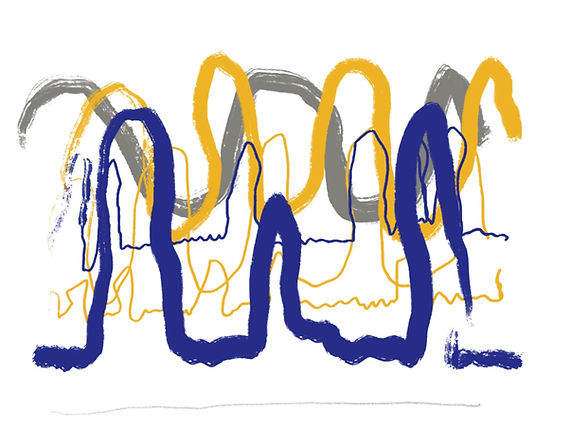
Robert and I are keen to work with charities representing ethnic minorities and women. We will be working with alkpositive.org.uk, a charity of people affected by lung cancer. ALK-positive lung cancer is a relatively rare form of lung cancer caused by the abnormal rearrangement of the anaplastic lymphoma kinase gene. Most patients are non-smokers, half are under 50 years of age when diagnosed (some are much younger), and the majority are female. Most patients are diagnosed at Stage 4.
AL Positive UK Meeting
I was unable to attend the meeting with Debra Montague the founder and chair of AL Positive UK as I was at work teaching and the meeting took place during a lesson. So I asked for the meeting to be recorded and I watched the meeting between Debra Montague, Robert, Simon and Fred. They disused SURGE, the project we propose, Robert’s research and why we want to work with them.
During the meeting, Debra Montague explained that ‘the majority of patients are diagnosed at stage four when it's no longer curable…. And it’s our job at the charity is to support members and to empower them.’ The charity is a young charity and this year it will be celebrating it 5th year, the charity has 556 members, AL Positive looks after patients and carers once they have been diagnosed. The cause of this cancer is unknown but affects primarily non smokers and 50% of the population are under 50 and 2/3 are female. The illness is silent for a very long time, with the majority of patients being diagnosed at stage 4 when it’s no longer curable. Debra spoke about how the charities aim is to empower and support the members. With members often being younger women with young families who won't get to see their children reach secondary school, Debra explained how for a lot of these women ‘it's such a shock to get a lung cancer diagnosis when you've never ….so people come to us when they're initially diagnosed ….in a great deal of shock and thinking they're gonna die’. Within the charity her members do lots of adventurous things such as ‘throwing ourselves out of aeroplanes, abseil down buildings and various things’.
‘So there's lots of life to be had with this condition because this is what we look like on a day to day basis when we're on the targeted treatments, we don't lose our hair, we and as I explained earlier, most of us are healthier than the average population.’
Within the charity there are two messages they want the public to know they are:
-
Anyone with lungs can get lung cancer.
-
For healthcare professionals, you need to exclude lung cancer as a potential cause in reoccurring symptoms.
Lethaby Gallery: SURGE Project Space
Central Saint Martin's Lethaby Gallery
Robert and I met at Central Saint Martin's Lethaby Gallery, the confirmed venue for our collaborative project. We measured and examined the space, discussing how we could display our proposed outcome. We had intended to interview people affected by heart disease or lung cancer. Then use these interviews to create sound works. However, a slight drawback of the space it’s a window gallery and is soundproof. We then discussed how we could get around this issue, and still have the sound works or at least a platform for them to be held on.

This led to Robert suggesting we 3D print the shape of an ultrasound image, which could be then used as a sculpture to place a QR code on it, which could then lead to the sound works. I have included an image Robert sent to me of a 3D printed sonogram, as an example of how the 3D printed outcome could look. This sonogram handle in itself looks like an abstracted version of itself.
Robert explained that he normally works with probes that are tiny optical fibres and around 1/3rd of the size of a screw. These would be difficult to see by the public if presented within the space. However, we could scale these optical fibres up and have them hanging from the ceiling, to indicate the tools used within this area of research.


We work through the desertion of the event bite terminology making the distinction between the word doctor and researcher. I demonstrated to Robert how to paint using ink and explained why I thought this would be a better media to use during the workshop instead of lino printing. This picture shows Robert experimenting with the media. We discussed how the painting workshop could use the colours of red, orange and yellow as this would be more reflective of the imagery used when creating data, as shown by the image above.
SURGE III: Lung workshop

These images highlight the first workshop for SURGE III. The workshop reflects a collaboration with participants linked to AL Positive UK.
Within the workshop we created expressive mark making paintings reflective of the marks seen in ultra sound images of lungs. We experimented with the media Busho and blending our colours from yellow-orange-red-brown-black, this gave us a feel for the material to understand how it moves and works.
Then we used coloured pencils to start our portraits, I encouraged the participants to draw someone who wasn't themselves as often it can be easier to draw a stranger than your own portrait. Although the down side to this, people were worried that they might offend someone by drawing them badly. Once the portraits were drawn in coloured pencils, we moved onto the light tones, using yellows and oranges. Then adding mid tones with reds and browns and finally the darkest tones and shadows with the black. The result a highly unique series of portraits, reflective of my painting practice and Roberts research.
These paintings below demonstrate the example paintings I made of Robert to show during the workshop as a guide to help participants create their own portraits in a similar style.

These painting shows my example of Robert and the the abstract mark making inspired by ultra sound waves of a lung.

Robert, Brusho and ink on paper, A4
On reflecting on the workshop and how to improve the next one. We realised that with our placement of seating we created an us and them situation. This was because Robert and myself sat at the front together and Simon sat close to us towards the front. For the next session we aim to spread out and be more integrated amongst the participants. I also think it might be positive to ask the participants to answer the questions as soon as they enter the room. Writing down their thoughts to the questions, this might remove some of the tension in the moments before the session starts and we have people filtering in. Giving the participants something to do as soon as they arrive, if they want to.
During the session one of the participants spoke about how their tumour was described as unremarkable and how some of the language used can be confusing. I found the word unremarkable has stuck with me.
Unremarkable: 'unworthy or unlikely to be noticed : not remarkable : common, ordinary. The village itself is unremarkable; its one great attribute being the nearby network of extensive caverns. Mark Blacksell.'
Unremarkable Medical Meaning: 'Unremarkable meaning describes the report as normal, which means that there is nothing to report. Nevertheless, it's a very powerful word used by radiologists that is helpful for medical experts. In the case of unremarkable meaning, there is nothing to worry about. It reflects that the patient is fine.'
It's interesting given the different contents of the word how the meaning can change so much.
SURGE III: Heart workshop
These images highlight the second workshop for SURGE III. The workshop reflects a collaboration with participants linked to British Heart Foundation.
Within the workshop we created expressive mark making paintings reflective of the marks seen in ultra sound images of lungs. We experimented with the media Busho and blending our colours from yellow-orange-red-brown-black, this gave us a feel for the material to understand how it moves and works.
SURGE III: Heart Fabric Designs


SURGE III: Lung Fabric Designs


Lethaby Gallery: Outcome Digital Drawing
These images highlight my plan for the Lethaby Gallery Space. I plan to create fabric panels as seen below with the outcomes from the workshops on fabric. I will then sew these outcomes to the medical frame. With the blue fabric taken from the medical frame or directly onto the wall of the gallery I plan to create a mural as seen by the digital drawing below. This represents sound waves, which have been collected and created based on conversations that occurred during the workshops and pre-sent questions to our participants.
Each panel of fabric is 89cmx131cm. Therefore the width of the medical frame is roughly 356cm and the hight is roughly 231cm. However, depending how I stretch out the frame and position it can alter the measurements.


Images Represent Sound Waves Of Spoken Words
These images represent sound waves of spoken words, words spoken by Robert. Robert used the software Audacity, he recored phrases such as 'I feel so isolated', 'sad' and 'Isolated'. These images represent these words, some have been zoomed in and some annotated to indicate where each part of the word matches up with the chunks of the sound wave. Robert discovered that Letter sounds from letters like "s", "t" and "d" tend to show up larger than other sounds, generally because hissing and percussive sounds tend to be larger in a sound waveform because microphones pick those sorts of sounds out strongly.


These drawings represent my experiments on plastic.

